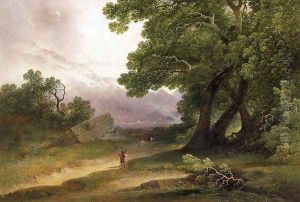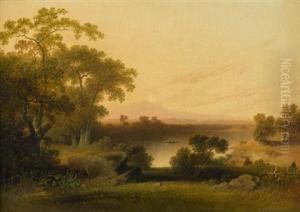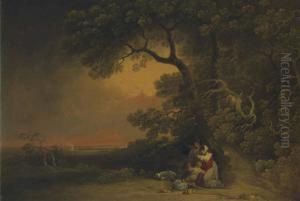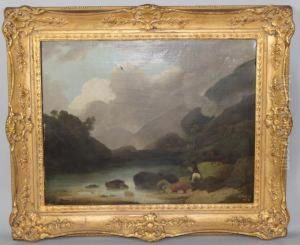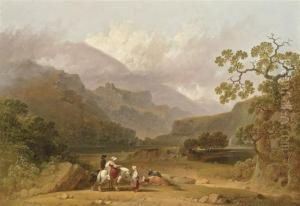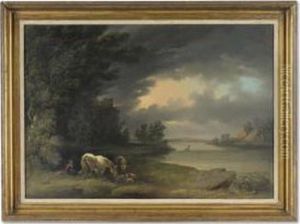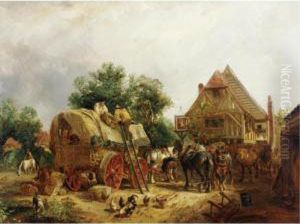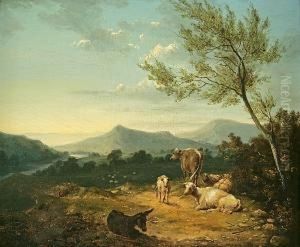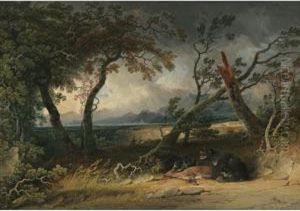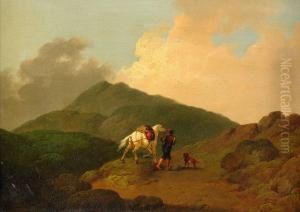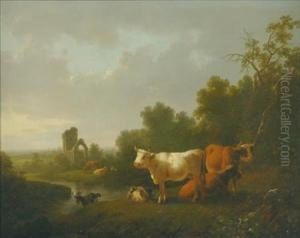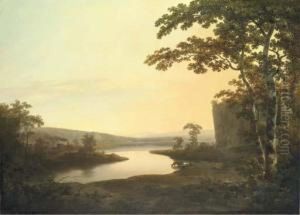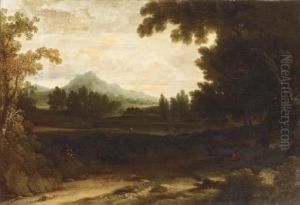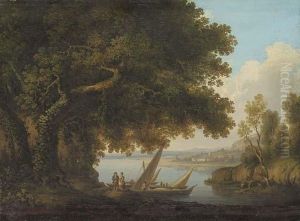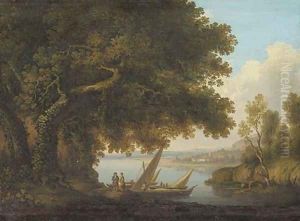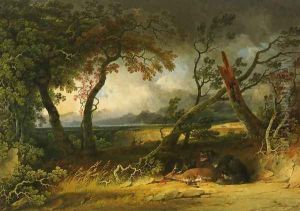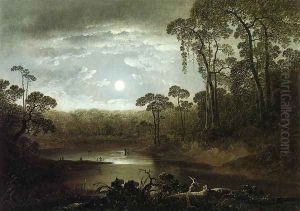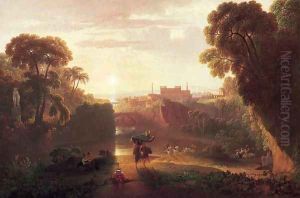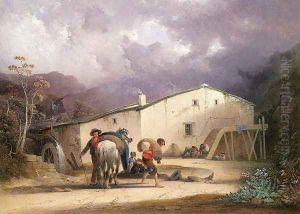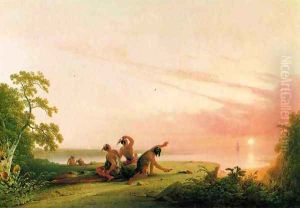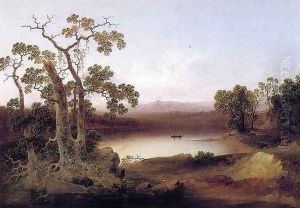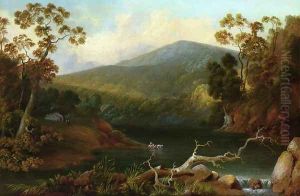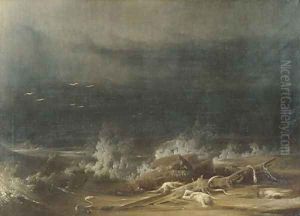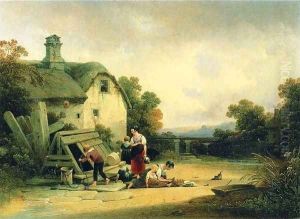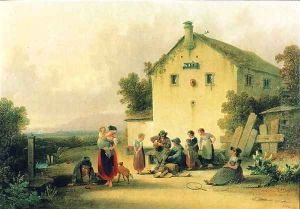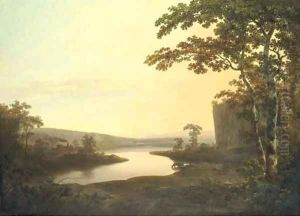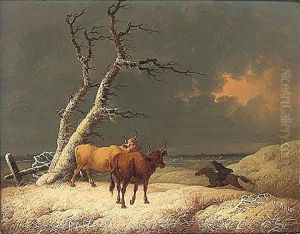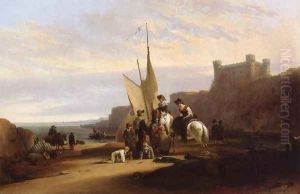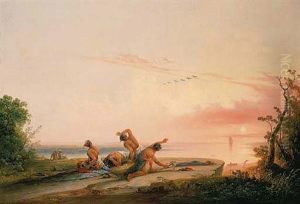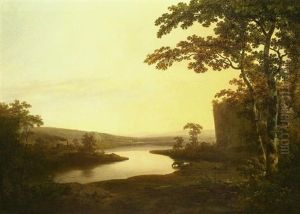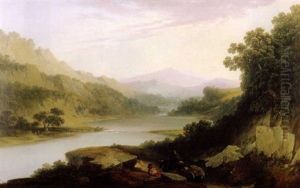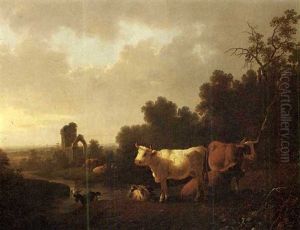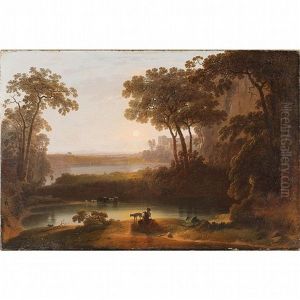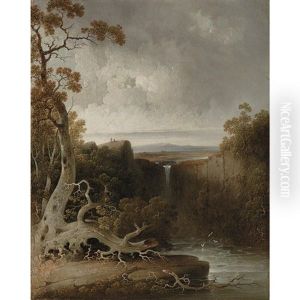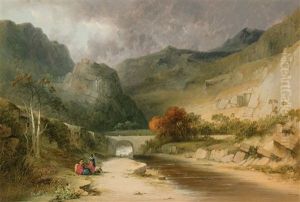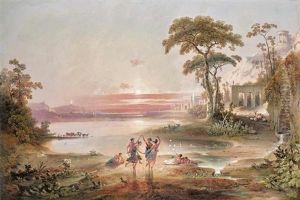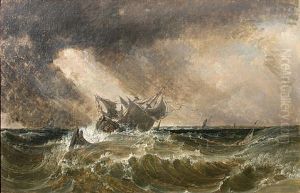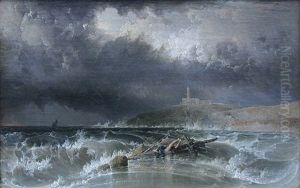Joshua Shaw Paintings
Joshua Shaw was a British-American artist known for his landscape paintings and as the 'father of American landscape painting.' He was born in Bellingry, Fife, Scotland, in 1776, and exhibited a talent for art from an early age. Shaw began his career as a self-taught artist, painting miniatures and small-scale landscapes. He served as an apprentice to a house and ship painter, which gave him a practical grounding in the use of color and composition.
In 1812, Shaw moved to America, where he would make a significant impact on the art scene. He settled in Philadelphia and became a member of the Pennsylvania Academy of the Fine Arts. Shaw is credited with urging Thomas Cole, the founder of the Hudson River School, to pursue landscape painting. Shaw himself was an advocate for the beauties of the American landscape, which he felt had been neglected by artists in favor of European scenes.
Shaw's work often featured dramatic and romantic depictions of the American wilderness and was characterized by meticulous detail and a keen eye for the interplay of light and shadow. His paintings were not just representations of the landscape but also infused with a sense of the sublime and the spiritual, reflecting broader Romantic sensibilities of the era.
In addition to his painting, Shaw was also an inventor. He is known for patenting the first color printing process in America in 1820, which he called 'polychrome,' and for designing a camera for landscape painting. His entrepreneurial spirit and his belief in the potential of American art led him to organize and finance the publication of a series of prints titled 'Picturesque Views of American Scenery.'
Throughout his career, Shaw exhibited his work in various institutions, including the Pennsylvania Academy of the Fine Arts and the National Academy of Design. His paintings are now in the collections of many important museums, and he is remembered as a pioneer who helped lay the foundations for an American tradition in landscape painting.
Joshua Shaw died in 1860 in Bordentown, New Jersey. His legacy lives on, and he is celebrated as one of the early figures who contributed to the development of a distinct American voice in the visual arts.
